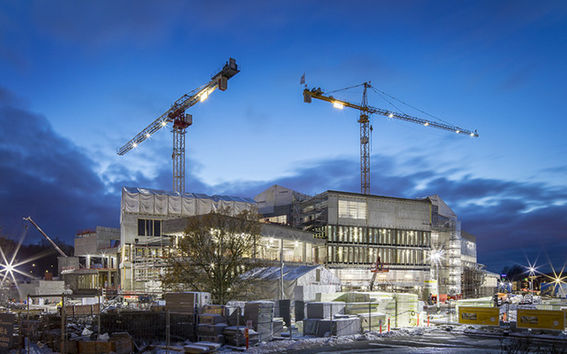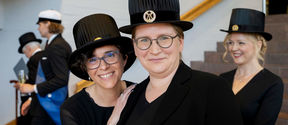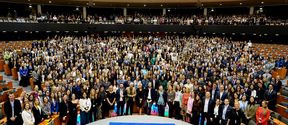Report finds investment in the creative sector improves Finnish economic viability

A study conducted by an assembled Creative Industries Working Group (CIWG) found that countries that invest in their creative sectors show a clear competitive advantage and offer long-term GDP growth. Wherein the current Finnish GDP finds the creative economy at 3.6%, countries like Sweden (5.8%) and the UK (5.2%) have seen benefits in a focus on their creative economies.
As Finland is aiming to increase employment rates to 72% by adding 110 000 jobs, a reduction in the barrier to entry for the creative sector along with the development of a more design mindedness and a greater value around brand experiences could help. Both in the creative fields and the broader Finnish economy.
The final report recommends an embedded ecosystem mentality with a stronger focus on the creative fields, along with a mixture of solutions including a renewed look at employment and copyright classifications, increased access to funding and education. Those recommendations will contribute to a midterm discussion with the Finnish government in mid-April.
Says Aalto University Vice President of Art and Creative Practices Anna Valtonen, 'We know that we must not just have great innovation – which Finland has – but, we also need to ensure that we think about the space between strict industry and creative economies differently. We must model a creative eco-system in the same way we have thought about our bio-economy – this has been the focus of the report and essentially the goal of the University's infrastructure, initiatives, and partnerships.”
Some of those partnerships include Aalto University's Design for Government courses that look at how service design can increase efficiencies at the governmental level. Working directly with the ministries, this course has been a tremendous hit since it started in 2013. Students have worked with the Ministry of the Environment and the Ministry of Agriculture and Forestry looking into themes such as accessibility of buildings, reducing the use of plastics, and extending the life cycle of different electronic products. These courses have saved money and created a platform for new careers and jobs.
Additionally, a new materials approach can also yield surprising innovations, as is the case with Aalto's multidisciplinary CHEMARTS. A programme that works at the intersection between sustainable materials and the fashion industry. Their projects – which include cutting edge technology such as cellulose based IONCELL-F – have connected Aalto's chemists and textile designers with major players in the fashion fields including H&M and Marimekko.
Intersecting these fields – that have been traditionally siloed – by remixing these seemingly separate sectors offers a new kind of thinking and yields not only better experiences or products, but also new employment opportunities. CHEMARTS facilitator Pirjo Kääriäinen agrees, 'This is no secret to us. We are constantly looking at ways to force or find innovations. If you live in an echo chamber you don't develop. The forest industry needs fashion and vice versa. So, if we can marry the space between our creative and economic drivers it's a clear win for everyone. Especially Finland.'
While Aalto's Otaniemi campus comes together so does its vibrant creative eco-system. Bolstered by a sprawling new arts, design and architecture building – the 30 000-square meter Väre – and its bubbling creative community of over 2 500 arts professors, researchers, and students. All converging in what is rapidly becoming the largest single collection of creative talent in the Helsinki and Espoo metropolitan area.
The University also offers plenty of infrastructure with prototyping facilities for companies interested in new colour and material technology with its A:Space; a connection between industry with student think-tanks and product design courses via the Design Factory; offices and services for emerging start-ups in the Startup Sauna and a new industry facing Aalto Bioproduct Centre this coming May.
Many other countries have begun to work in this way, looking at valuing the product experience as much as the product itself. As the S&P 500 index demonstrates, increasingly we see upwards of 84% of company market value being held in intangible assets verses only 17% a few generations ago. It's a clear trend that maps directly with the increase in market share held by more innovative and IP minded companies and services including Airbnb, Uber, Apple or Tesla. All businesses that clearly benefit from a strong creative backbone.
Valtonen adds, 'While increasing jobs in the creative sector most certainly will have a positive impact on the economy overall, the real insight (of the report) is if we can embed this way of working and hiring inside the companies themselves. We need to move closer to the bleeding-edge and be more experimental in our work as a country – but, we must also continue to teach and model this point of view in our classroom, campus and beyond. In this way, we would ensure a competitive advantage and challenge the status quo to truly think differently.'
More information:
Aalto University
Anna Valtonen, Vice President
tel. +358 50 592 2317
[email protected]
- Published:
- Updated:
Read more news

Doctoral education pilot arouses wide interest among applicants and corporate partners
The doctoral education pilot has got off to a fast start.
Milja Mieskolainen: The Schuman internship at the European Parliament exceeded my expectations
Milja Mieskolainen, a Master's student in Accounting at the Aalto University School of Business, had already considered applying for an internship in the European Union, but thought it would be too challenging to get an internship. In spring 2023, however, she noticed an advertisement for internships and decided to give it a try, as there was an interesting vacancy in the Economic governance and EMU Scrutiny Unit. Applying did not prove difficult either. Milja applied, got the job and started her internship at the European Parliament in October.